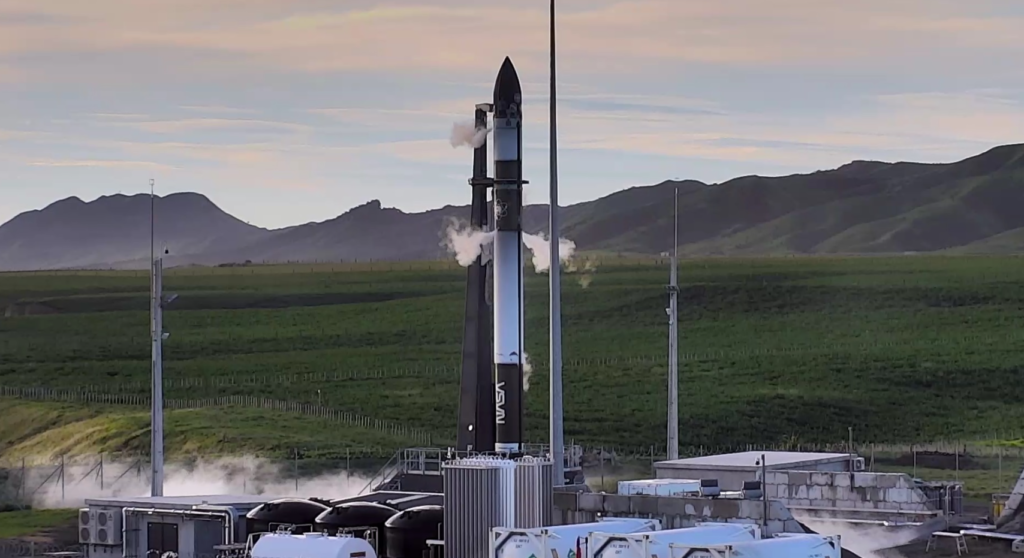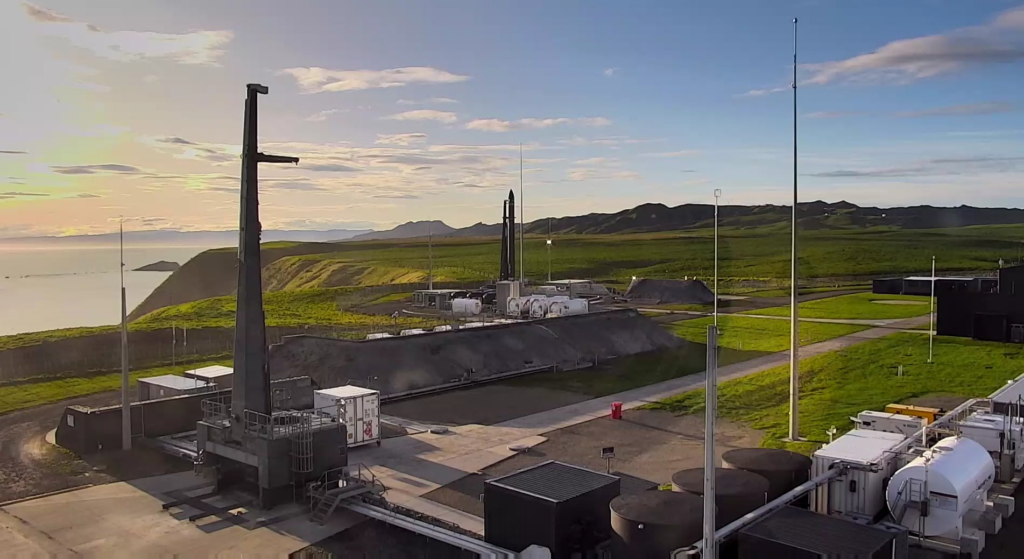
Rocket Lab Is Only Days Away From Launching For The Moon
The Moon is a fascinating celestial body that provides a large host of benefits with the right tools. While it has been decades since humans stepped foot on its surface, this is set to change not long from now. Apart of Artemis, NASA is working on many projects and getting help from the commercial industry as well. This is exactly what’s happening on the CAPSTONE mission with Rocket Lab.
By now in late June, the mission is expected to launch in only a few days from now. Just yesterday Rocket Lab and NASA announced they were targeting two days from now on June 27th, for launch from New Zealand. Over the past few weeks, there have been a few delays but everything seems to be in order now. For the first time, Rocket Lab and its small-lift launch vehicle Electron will attempt to reach the Moon.
In addition, Electron will be needing the help of Photon to propel the CAPSTONE payload the long distance. If successful, this mission will provide key information for the future of Artemis, and specifically the orbit expected to hold the Gateway lunar space station. Here I will go more in-depth into some of the recent updates and what the mission entails.
Recent Updates

While there have been a few delays, Rocket Lab has stayed busy continuing to prepare for the long awaited launch. Some of the most recent updates began on June 14th when Rocket Lab tweeted saying, “In August 2020 we launched our first Photon spacecraft to orbit. Less than two years later, a high-energy variant of our in-house designed and built Photon spacecraft is getting ready to set a course for the Moon. This showed off both the first Photon spacecraft and the version created for this special mission to the Moon with CAPSTONE installed. The next day on June 15th, Rocket Lab tweeted again this time mentioning, “As we prepare to launch #CAPSTONE to the Moon, another Electron is on the pad at LC-1. With a successful wet dress rehearsal completed, this rocket is ready to fly soon after #CAPSTONE leaves the pad. Not long ago Rocket Lab completed the second launch pad at their New Zealand Launch Complex. This has allowed the company to work on multiple missions and increase their launch cadence.
In terms of the mission to the Moon, the next update came a few days later on June 22nd. Here Rocket Lab tweeted pointing out, “What makes CAPSTONE a particularly special mission? “It’s demonstrating access to the Moon for a small spacecraft on a small rocket. It’s really pushing the envelope as a commercially owned spacecraft operating at the Moon and helping to blaze a trail that others can follow.” The results of this mission will truly show off the capabilities of not only Electron, but also Photon. Just a few days ago on June 23rd, Rocket Lab continued to give out updates with another tweet saying, “L minus 3 days. We’re charting a new path to the Moon in support of @NASA’s Artemis program We’re counting down to June 27 for the launch of CAPSTONE with our mission partners @NASA, @AdvancedSpace and @TerranOrbital!” Next, on June 24th, Peter Beck tweeted mentioning, “The HyperCurie engine powering our Photon spacecraft for #CAPSTONE . This engine will take us to the moon.” Very recently the company also provided footage of a hot fire with this engine demonstrating its capabilities. Finally, only a few hours ago, Rocket Lab tweeted one last time about CAPSTONE. This update pointed out, “To allow time for final systems checks, we’re now targeting no earlier than June 28 for the launch of CAPSTONE for @NASA & @AdvancedSpace. The trajectory design means the spacecraft will arrive at its lunar orbit on Nov. 13 regardless of launch date between now and July 27. It’s clear that NASA as well as some of the other companies involved are working to ensure everything is perfect before the launch. This has created a few delays this month for various reasons.
CAPSTONE & Electron

Now that we know more about some of the recent updates on the mission, we can take a close look at the mission profile, and how Rocket Lab intends to reach the Moon with a small-lift launch vehicle. Rocket Lab launches typically deploy spacecraft to orbits between 500 – 1,200 km altitude above Earth’s surface. This time, the company is combining Electron and Photon to send a spacecraft a little bit further than usual. Some 1.3 million km further. CAPSTONE will be launched to an initial low Earth orbit by Rocket Lab’s Electron launch vehicle and then placed on a ballistic lunar transfer by Rocket Lab’s Lunar Photon spacecraft bus. Unlike the Apollo lunar missions of the 1960s and 70s, which took a free return trajectory to the Moon, this fuel efficient ballistic lunar transfer makes it possible to send CAPSTONE on its way to such a distant orbit using a small launch vehicle.
It begins with Electron lifting off from Launch Complex 1 with CAPSTONE integrated onto the Photon spacecraft bus inside the fairing. Around nine minutes after lift-off, Electron’s second stage will separate from Photon, placing the spacecraft bus and its CAPSTONE payload into an initial low Earth orbit at an altitude of 165km. From this initial parking orbit, Photon’s HyperCurie engine will perform a series of orbit raising maneuvers over five days. The HyperCurie engine will ignite periodically to increase Photon’s velocity, stretching its orbit into a prominent ellipse around Earth. Six days after launch, HyperCurie will ignite one final time, accelerating Photon to 24,500 mph (39,500 km/h) enabling it to escape low-Earth orbit and set CAPSTONE on a course for the Moon. Within 20 minutes of the final burn, Photon will release CAPSTONE into space for the first leg of the CubeSat’s solo flight. CAPSTONE’s journey to NRHO is expected to take around four months from this point. CAPSTONE’s low-energy cruise will be punctuated by a series of planned trajectory correction maneuvers. At critical junctures, CAPSTONE’s team at Advanced Space’s mission operations center will command the spacecraft to fire its thrusters to adjust its course. Assisted by the Sun’s gravity, CAPSTONE will reach an altitude of 810,000 miles (1.3 million km) from Earth, more than three times the distance between the Earth and the Moon, before being pulled back towards the Earth-Moon system. Once successfully inserted into the orbit, CAPSTONE is expected to remain there for at least six months, allowing NASA to study the orbit dynamics.
It’s clear from the mission profile and a lot of the updates we have been receiving, that Photon is of massive importance for this launch. Photon is an integrated launch and satellite solution. This sometimes referred to as a third stage, is based on the heritage Electron launch vehicle Kick Stage, leveraging numerous components that have significant flight heritage, including the Curie engine, an in-house designed and developed in-space propulsion system. Photon flies as the upper stage of Electron, eliminating the parasitic mass of deployed spacecraft and enabling full utilization of the fairing. Photon can also fly on other launch vehicles, in particular using ESPA ports as a secondary payload. It’s Vertically integrated with in-house subsystems based on constellation-scale manufacturing capabilities. As seen in this coming launch, Photon is configurable for a range of missions in LEO, MEO, GEO, and beyond, including lunar and planetary.
In terms of the payload itself, a CubeSat weighing just 55 pounds will serve as the first spacecraft to test a unique, elliptical lunar orbit as part of the Cislunar Autonomous Positioning System, Technology Operations and Navigation Experiment (CAPSTONE). As a pathfinder for Gateway, a Moon-orbiting outpost that is part of NASA’s Artemis program, CAPSTONE will help reduce risk for future spacecraft by validating innovative navigation technologies and verifying the dynamics of this halo-shaped orbit.
The orbit, formally known as a near rectilinear halo orbit (NRHO), is significantly elongated. Its location at a precise balance point in the gravities of Earth and the Moon, offers stability for long-term missions like Gateway and requires minimal energy to maintain. CAPSTONE’s orbit also establishes a location that is an ideal staging area for missions to the Moon and beyond. The orbit will bring CAPSTONE within 1,000 miles of one lunar pole on its near pass and 43,500 miles from the other pole at its peak every seven days, requiring less propulsion capability for spacecraft flying to and from the Moon’s surface than other circular orbits.
Conclusion
Many of us have been keeping close track of this unique mission and Rocket Lab’s involvement. Thanks to the combination of Electron and Photon, Rocket Lab is capable of reaching the Moon with a small-lift launch vehicle. While there have been a few delays this month, the launch is set to happen in only two days on the 28th. This launch will likely be a significant milestone for the company and display what different rockets are capable of. It will also provide crucial information for the future of Gateway and returning humans to the surface of the Moon. We will have to wait and see how it progresses and the impact it has on the space industry.
